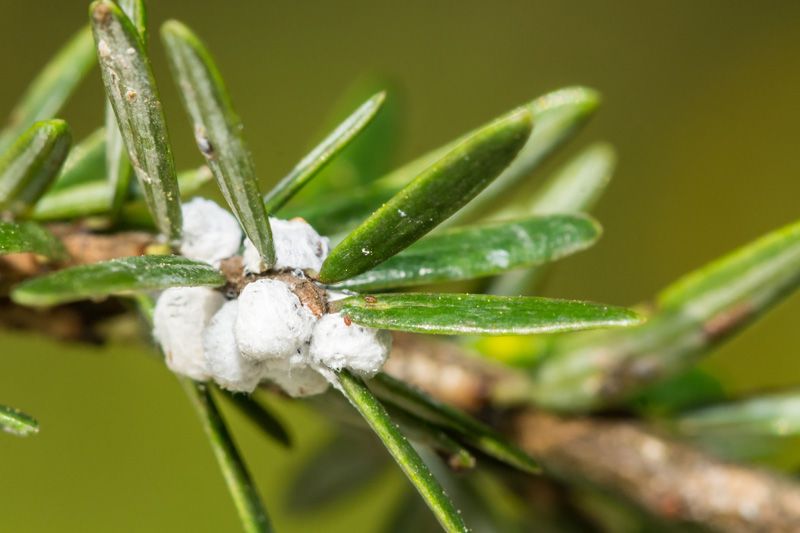
Hemlock Woolly Adelgid – Adelges tsugae
Hemlock Woolly Adelgid – Adelges tsugae
Description of Insect:
The hemlock woolly adelgid (Adelges tsugae) is a small, invasive sap-sucking insect that poses a severe threat to hemlock trees across North America. Native to Japan, this reddish-purple insect belongs to the Adelgidae family. It has rapidly spread across the eastern United States, causing widespread damage to native hemlock forests.
Despite their small size—measuring 0.8 mm in length—hemlock woolly adelgids are easily identifiable by their egg sacs. The egg sacs are white, wool-like masses usually seen on the undersides of hemlock branches. The aphid-like adelgids themselves are soft-bodied, oval-shaped, and dark in color, making them difficult to spot without their distinctive woolly coating.
They feature four specialized stylets, which they insert directly into the tree’s nutrient transport tissues. It may also inject toxic substances while feeding, depleting essential resources and causing needle drop, branch dieback, and eventual tree death.
This pest targets both eastern hemlock (Tsuga canadensis) and Carolina hemlock (Tsuga caroliniana). They have the ability to reproduce asexually in North America—where only females exist, producing 2 generations per year. This has allowed them to spread unchecked, devastating hemlock populations across the eastern U.S. and parts of Canada.
Life cycle of Hemlock Woolly Adelgid
The hemlock woolly adelgid has a complex, multi-generational life cycle that allows it to thrive year-round. It reproduces asexually in North America, meaning a single adelgid can establish an entire infestation without the need for mating. The life cycle consists of two overlapping generations per year.
The first wingless generation, known as the sistens, emerges in late spring and overwinters on the host tree, surviving for about 9 months. The sistens mature and lay up to 300 eggs, which hatch into crawlers—the mobile nymph stage that spreads to new branches or trees. The first instar nymphs stay dormant throughout the summer (aestivation). They resume feeding and complete their development when temperatures cool down in fall.
The second generation, called the progrediens, hatches in early spring and develops rapidly in three months. It consists of both the wingless, and winged (sexuparae) offspring. These crawlers settle on hemlock branches and enter dormancy, restarting the cycle. The sexuprae reproduces sexually. However, it requires a specific spruce species as the host. Since this species is not found in North America, it dies before sexual reproduction occurs.
Unlike their counterparts in their native range, North American adelgids do not migrate to a secondary host species. Instead, they remain on hemlocks, lay eggs that hatch and enter aestivation, completing their entire life cycle.
Damage they cause:
Its impact extends beyond individual trees, threatening entire ecosystems that depend on healthy hemlock populations.
- Ecological Consequences: Hemlocks play a crucial role in forest ecosystems, providing shade, regulating stream temperatures, and supporting diverse wildlife populations. The loss of hemlocks leads to detrimental effects, including habitat destruction for birds, insects, and mammals that rely on hemlock canopies. Streams that were once shaded by hemlocks may experience temperature increases, negatively affecting cold-water fish species such as brook trout.
- Economic Impact: The decline of hemlock forests has significant economic repercussions, particularly in the nursery. According to an estimate, the nursery industry in North Carolina, and Tennessee maintains hemlock stock worth $34 million. Therefore, potential infestations pose significant risk of loss to the industry. Additionally, loss of valuable hemlock wood reduces lumber availability, impacting the timber industry.
- Changes in carbon cycle: Hemlock trees play a vital role in regulating carbon levels in the atmosphere, contributing to climatic stability. Widespread tree mortality caused by infestations leads to changes in the carbon cycle, negatively impacting the environment.
